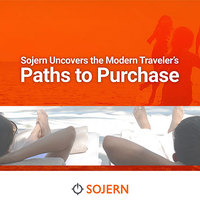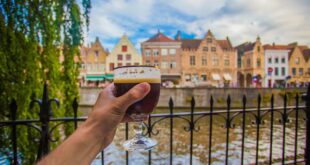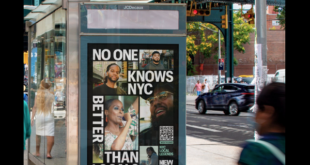[ad_1]
SAN FRANCISCO – Sojern, travel’s direct demand engine, released its new report, “The Modern Traveler’s Path to Purchase” . The report offers deep insights into how consumers buy travel services by looking at eight anonymous user purchase journeys spanning multiple devices, regions, and trip motivations. The report debunks the prevailing notion that travelers plan their trips in a predictable way following the ‘average,’ and demonstrates the need for brands to use highly personalised targeting in order to reach and impact travelers across the full range of shopping journeys.
“The pathway to purchase for the modern traveler is both fascinating and complex and one of the fundamental challenges we are all facing today is how do we connect the dots and use data to better understand how to talk to the right customers at the right time,” comments Stephen Taylor, Senior Vice President at Sojern. “If we can use data to understand what stage each unique traveler is at and plot consumers along this pathway, then we can start to do what we are all aspiring to, which is not just knowing the right time to serve the right message but to begin doing it in sequence. We need to consider how we can take someone down their pathway in a way that is most likely to end in a booking.”
Select companies like Sojern have the technology to connect the dots between the intent generated by online travel research and the delivery of ad content targeting consumers with personalised messaging, based on their stage along the path to purchase.
Key findings in the report:
- The age of mobile bookings is upon us. Just because the majority of bookings are still happening on desktop on average doesn’t mean there aren’t a significant and growing number of travelers who’d prefer to book on mobile. Taking a closer look at one of our anonymous user paths to purchase, we see that ‘Eric’ does the majority of his travel planning and booking on his mobile phone. He has 445 mobile touchpoints and three mobile bookings. But, only 6 desktop touchpoints and one desktop booking. This is indicative of the trend we are seeing towards not only mobile research, but increasingly mobile bookings.
- Booking behavior varies widely, even within individuals. In one example, an anonymous cruise traveler has ample lead time for air and cruise bookings at around 106 days. But, ‘Isabel’ is very much a last-minute booker for hotels—securing her hotel room only three days before her stay. Marketers are missing out if they advertised to ‘Isabel’ based on assumptions rather than using a platform like Sojern that can target each stage of that person’s unique path to purchase, regardless of how how simple or complex their journey is.
- Capitalize on the power of direct bookings. ‘Leslie’ visits the website of a boutique hotel nearly as many times after booking as he does before booking. He visits the website to research room upgrades, amenities, activities and more. Had this traveler booked through a third party site, they would own the contact info, the relationship with the customer. With direct bookings, the hotel has an engaged guest to whom they can upsell and make the stay memorable. This builds brand loyalty. Utilizing data to serve travelers more relevant ads will successfully drive direct bookings and higher RevPAR for your hotel.
“Every traveler’s path to purchase is unique and the difficulty with averages is that, almost by definition, it is unlikely that many travelers will indeed fall into this category. The challenge for us as marketers is that no two consumers are alike and the complexity of how travelers research and book online requires a better understanding of each individual’s path to purchase,” adds Stephen Taylor, Sojern.
[ad_2]You can read more of the news on source
 Travelsmart
Travelsmart



